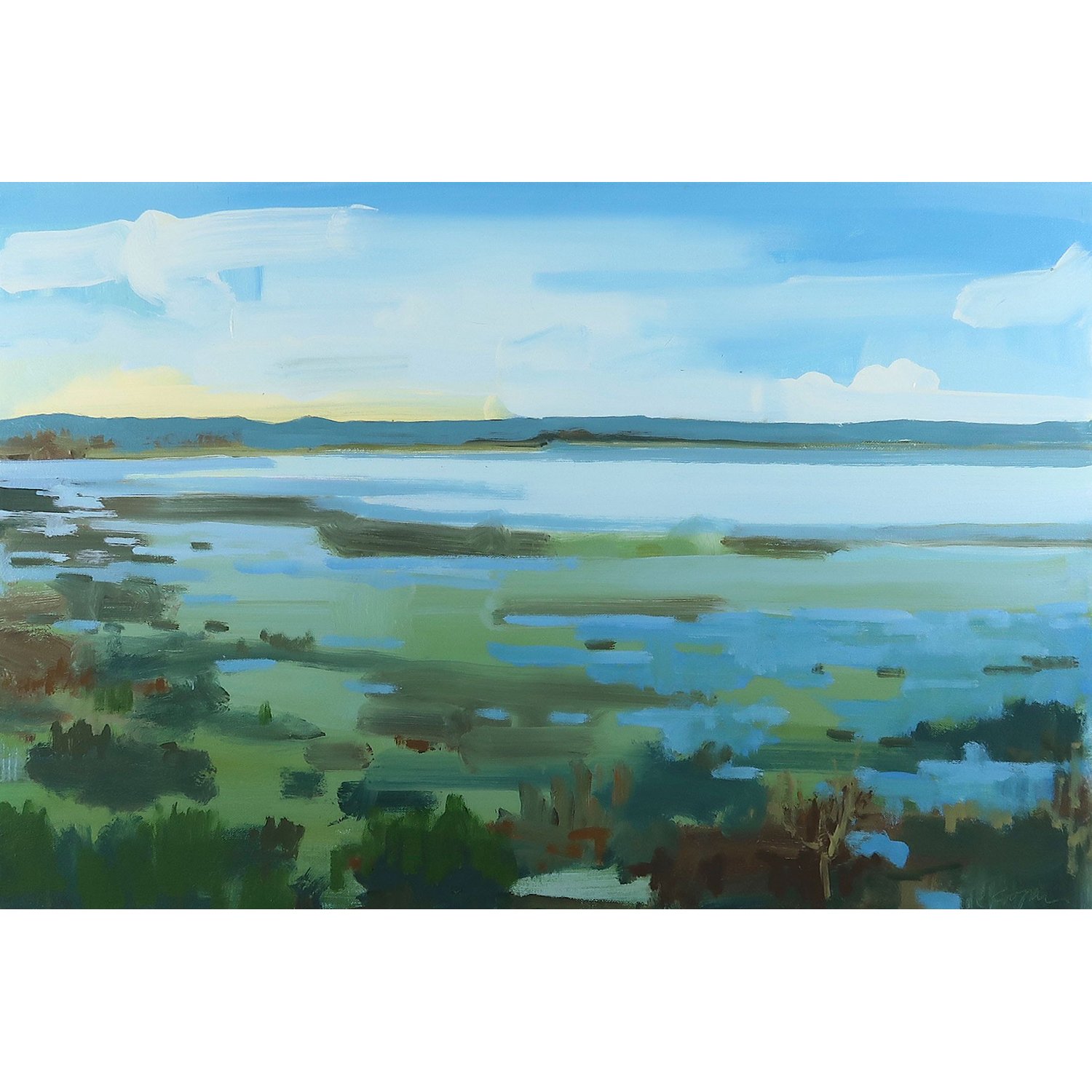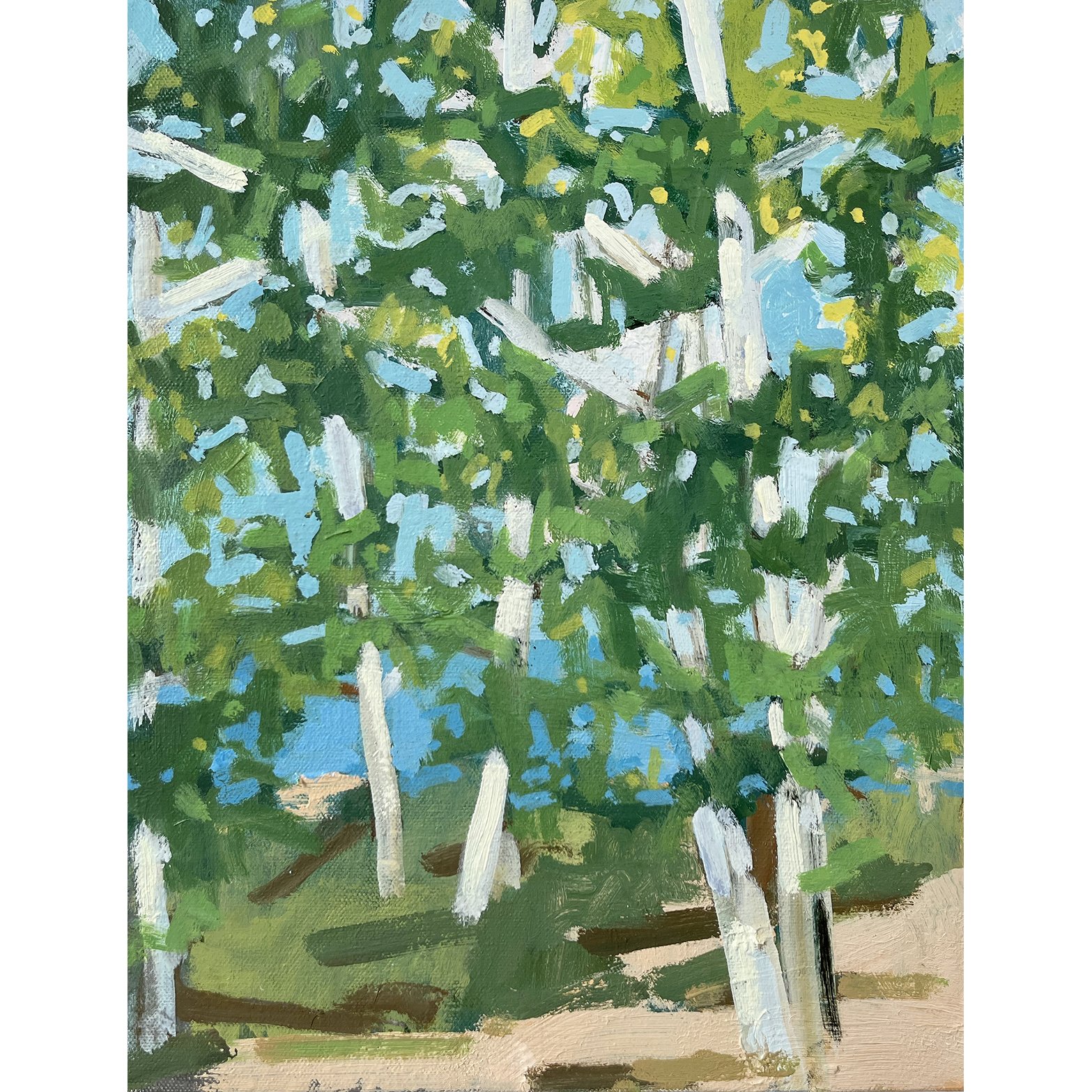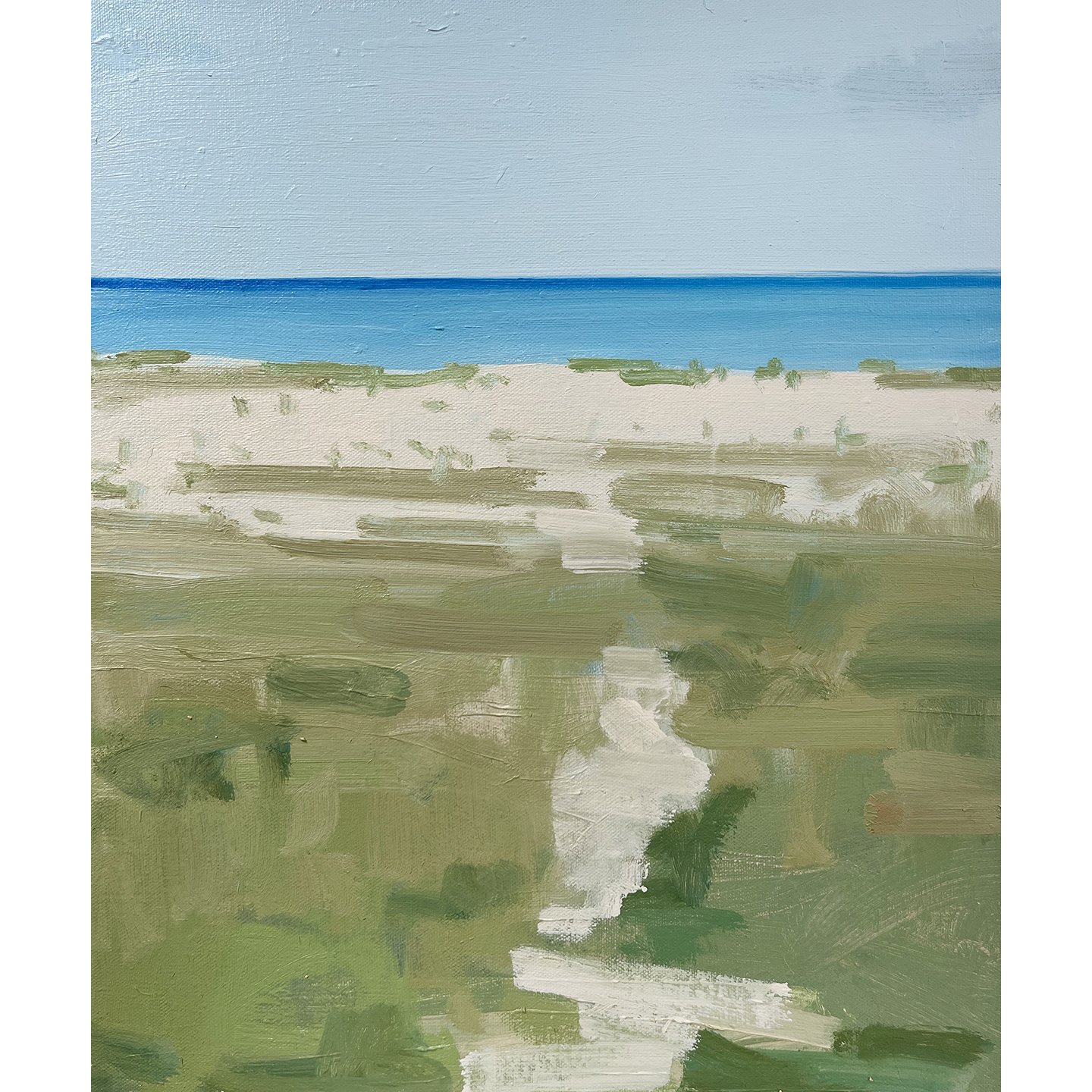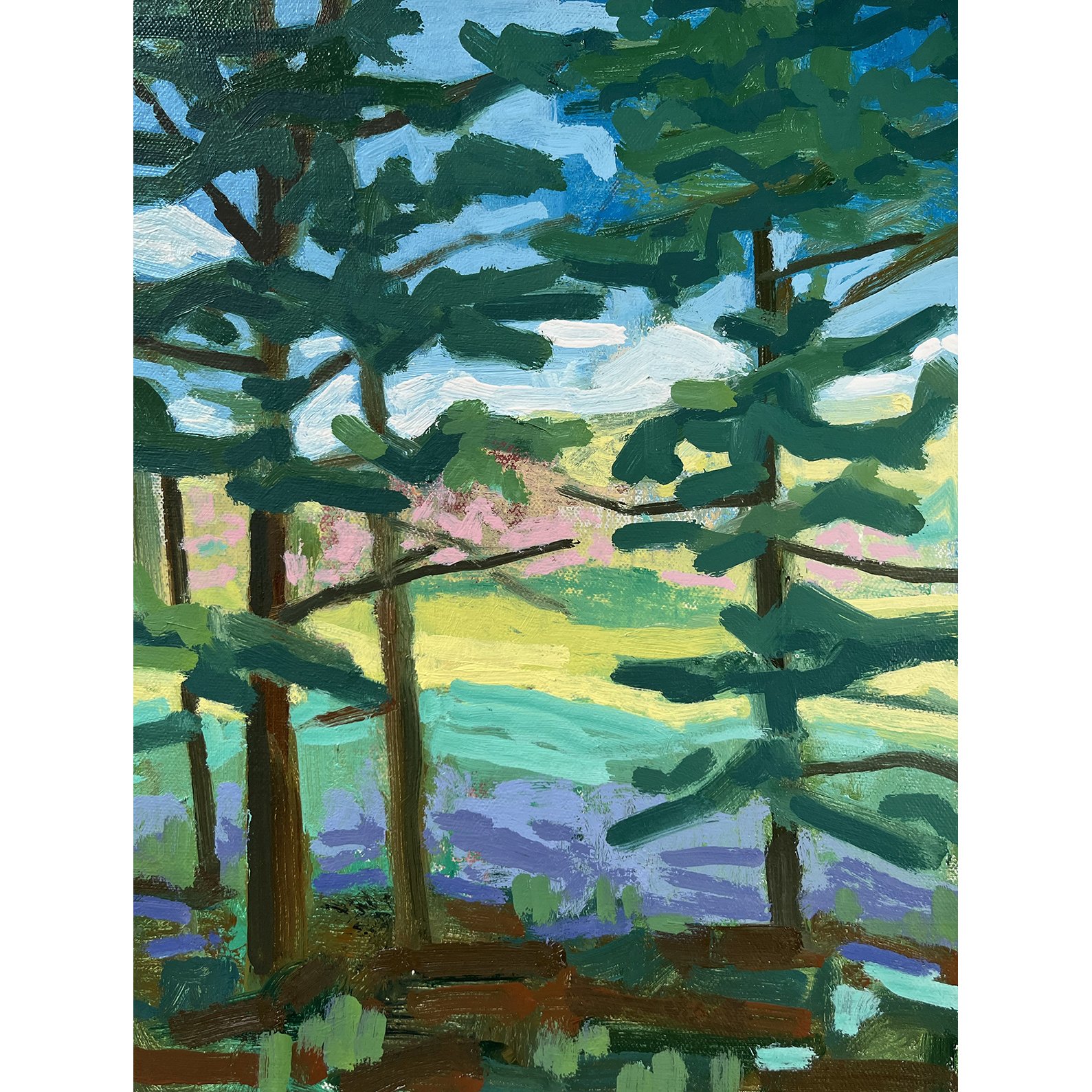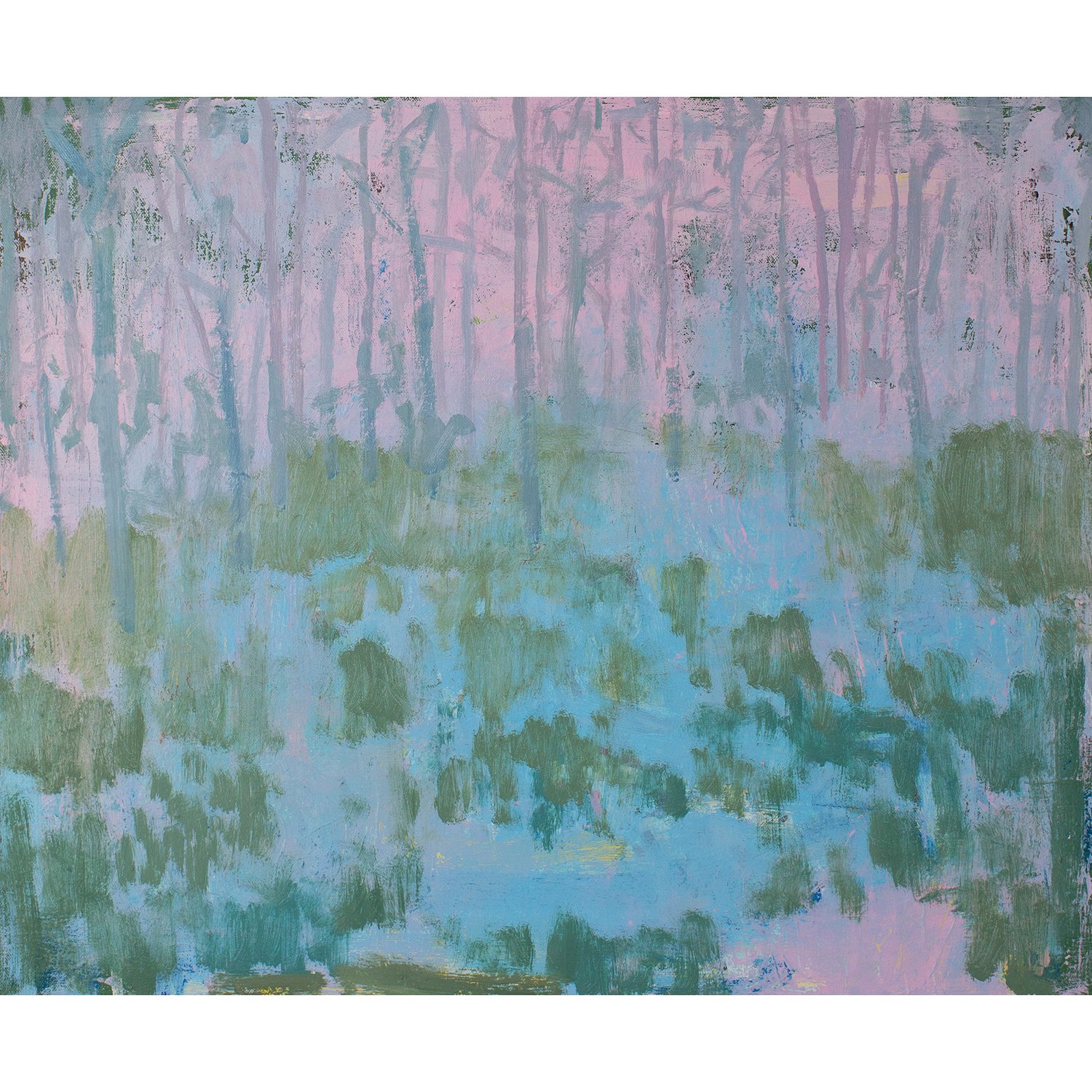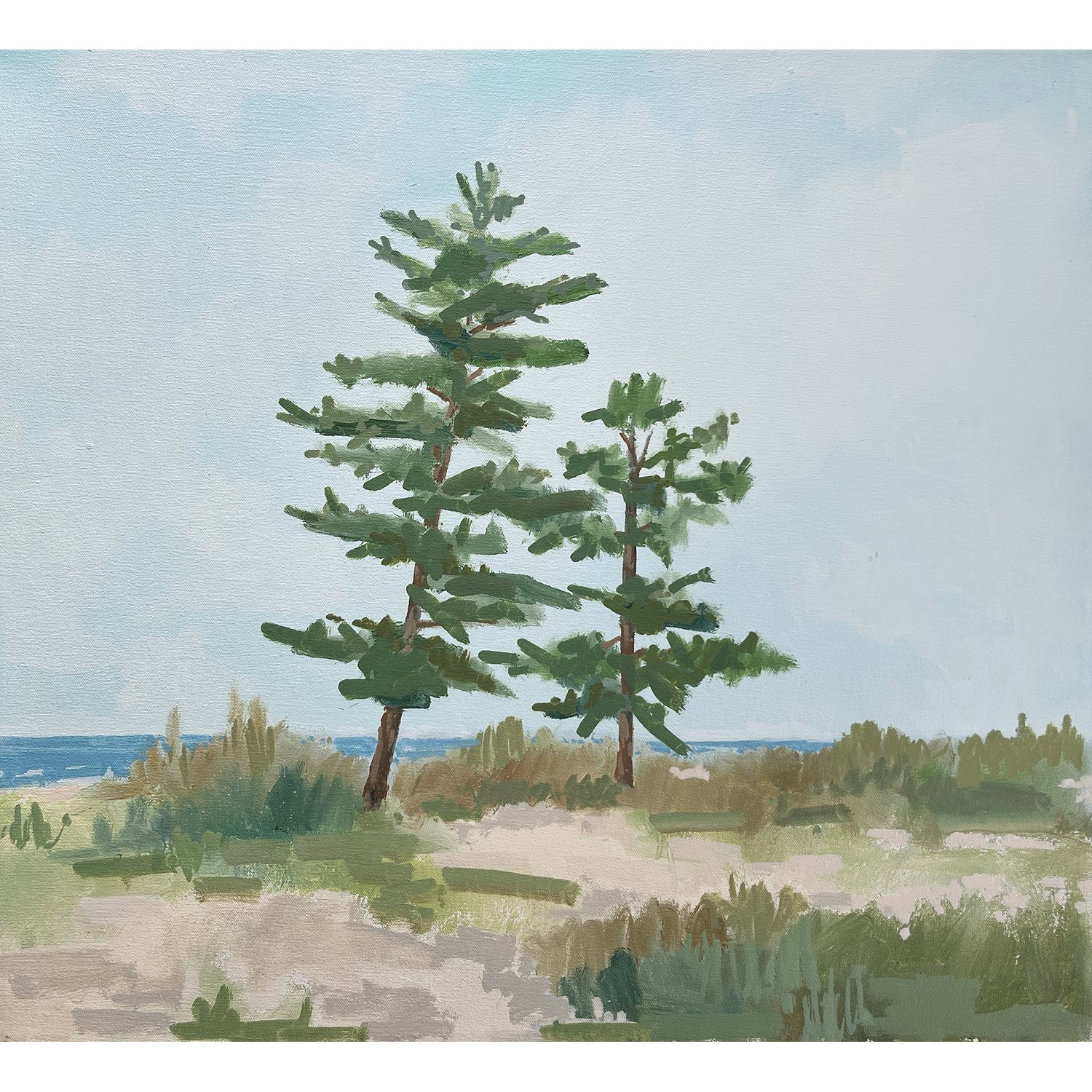Dawn with arms of roses… by Richard Kooyman
I’m thrilled to share the gallery’s first online exhibition: Dawn with arms of roses…, a collection of twelve paintings by artist Richard Kooyman. Richard’s Italian paintings have always tugged at my heart. I fell in love with his series of painted gardens when we were selecting work to show from him prior to the gallery opening in 2021. Operating out of such a small gallery, we simply don’t have the wall space to show some of the larger works we would love to from our artists. Thankfully, Richard was open to the idea of an online show and now we have the opportunity to give these paintings - many of which have never been shown in public before - the spotlight they so deserve.
A gifted writer, Richard beautifully describes below the narrative quality of these works, the origin of the show’s title, and the impact of time spent in Italy for a residency.
Dawn with arms of roses… is series of figural and garden paintings exploring the fullness of the Italian allure by Richard Kooyman. Inspired by Roman wall frescoes and Renaissance paintings, these works converse with antiquity and investigate the purpose of defining beauty over the centuries.
The title of the show, Dawn with arms of roses… comes from the fragmentary poetry of Sappho, a musician and poet from the 1st Century BC. Known for the slogan, make love, not war, Sappho’s music is now lost, and only fragments of her lines have been unearthed and translated.
And yet, what remains between the spaces are some of the earliest descriptions of heart-pounding love affairs and fragrant groves and gardens.
"I went to Italy to study beauty. I was both enticed and bewildered. I stood mesmerized in front of an Italian Renaissance painting by Botticelli and was struck at just how old an art object this was. Where did this idea of beauty come from?
Everywhere I looked, I saw layers of antiquity and pursuits for happiness. I became curious how ancient philosophical ideas of beauty felt relevant to me today. Why do I feel so connected to these figures in a painting? What is it about a classical sculpture that feels human and purposeful?
Keats called it truth. Sappho called it love.
The Roman and Renaissance painters considered birds, animals, figures, plant life, and weather central to their paintings. It would appear they lived or wanted to live in one big garden. The human vitality in their paintings, their architecture, sculptures, and gardens inspired me to reimagine my own contemporary play on myths and the ideologies of truth, beauty, and love.”
- Richard Kooyman




